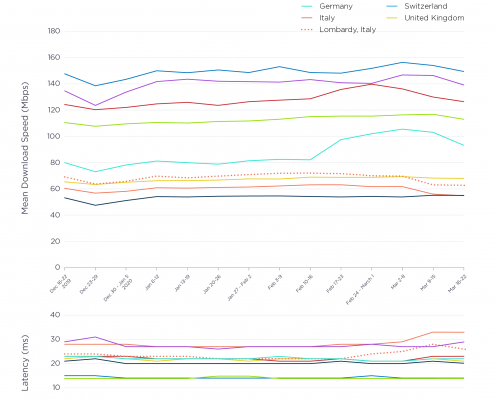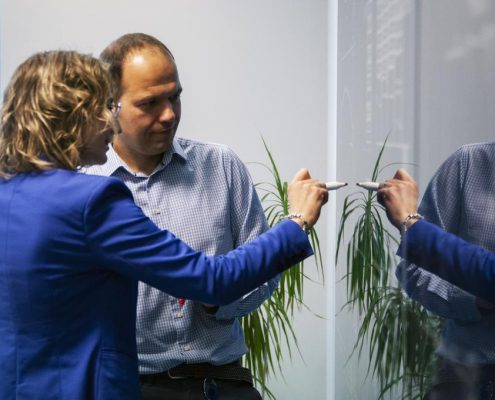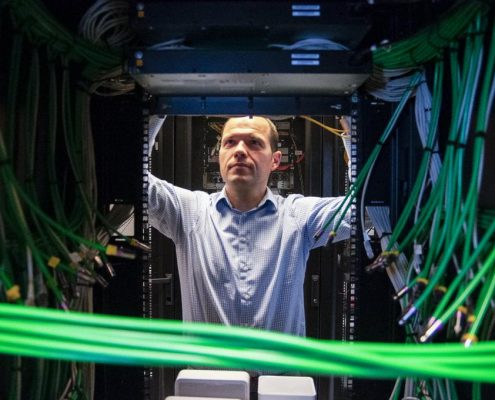Transformation in access networks is no longer in the pipeline, it’s a reality. Multiple System Operators (MSOs) are replacing analogue optics with digital optical solutions to create a new generation of access networks. Step by step, we are migrating from centralized access architecture (CAA) to distributed access architecture (DAA). What is driving this transformation?
The answer is simple: the rising consumption of greater amounts of data. Operators strive to simplify their infrastructure for all their services, including fast data transfer, voice transfer, TV channels, Video On Demand (VOD) and other new services. Why is the evolution of access networks so important for multiple system operators and how does keeping millions of people at home impact the speed of an internet connection?
Multiple system operators are putting an ever-growing emphasis on building more flexible, automated and secure HFC networks. Cable infrastructure covers millions of subscribers in Europe, which is why there is a huge need to meet their demand for top-speed bandwidth. Over the past decade, the average use of downstream bandwidth in cable operator networks has grown at a CAGR of 36%, while the average use of upstream bandwidth has increased at a CAGR of 17%. This may be interpreted as a situation where technology finally makes it possible to provide bandwidth that enables keeping pace with and exceeding bandwidth demand. Another interpretation assumes that the traffic is becoming more and more variable due to the growing difference between maximum and average band use. Technologies such as DOCSIS 3.1, or DOCSIS 4.0 ESD (Extended Spectrum DOCSIS) are the answer to the growing return channel needs.

Fig. 1 DOCSIS evolution

Fig. 2 Fixed Access Networks Performance in Select European Countries | source: https://www.speedtest.net/insights/blog/tracking-covid-19-impact-global-internet-performance/
The demand for high bandwidth is dynamically growing because of the spreading coronavirus pandemic. This is especially clear in countries where critical social distancing measures have been undertaken. More and more people choose to stay at home for the sake of their own safety. Technology has greatly impacted the way we communicate and live every day. Hand in hand with technology goes broadband internet access, which is a lifeline for many people during the quarantine. With it, they can keep in touch with their loved ones, get entertainment or the right conditions to work from home.
Changes in user behaviour and more frequent internet use was seen already in early March. There is a slight drop in countries such as Spain and Italy, the countries most affected by the pandemic, which introduced strict measures of social distancing.
At the same time, a much larger number of internet tests has been observed. This shows how important providing reliable internet access is in every sphere of life, both professional and private.
Operators face the challenge of providing users with access to networks with ever-increasing bandwidth to guarantee a fast data flow. They need to develop strategies for the evolution of their networks to find the answer to the growing market needs. There is no single way to do this. At least several options are available for extending the existing networks, based on various different technologies that support each other, including DOCSIS, Remote-PHY or passive optical networks (PON).
DOCSIS 3.1 is a response to the growing market demand due to the need to send more and more information in both directions, to and from the subscriber. It provides improved spectral performance by using many technologies, such as:
Distributed architecture based on the Remote-PHY technology transfers the DOCSIS PHY layer to the digital optical node, converting analogue optical connections between the headend and the node into digital connections. The big advantage of this approach is the much higher infrastructure performance. Leaving the MAC layer inside the headend allows for easier control and scaling.

Fig. 3 Remote-PHY (RPHY) architecture
It provides a number of benefits for the HFC infrastructure. The introduction of digital optical connections allows operators to use solutions that are more cost-effective and have an established position in the industry. What is more, by using a wider spectrum and improving the connection’s noise parameters, it increases data processing capabilities.
The biggest advantage of the PON network is that it is passive, i.e. the limiting of the use of active devices to those found in the central point of the network, (i.e. OLT), alongside ONU client devices.
This architecture is simpler in terms of usage, due to the absence of active elements in the outside plants. However, it requires extra optical fibre aggregation points in the network. The new-built cost is comparable for both types of networks but, in fact, in the long run, the passive optical network is cheaper to operate. Both HFC and PON solutions have completely different scalability and a different way of transmission aggregation.
The upgrading of an HFC network seems necessary to ensure the competitiveness of operators’ services against service providers who use other types of access networks. Operators can choose from many tools that will allow them to upgrade their network. This depends on the parameters, demand and statistical distribution of subscribers using particular services, taking into account logistics, operational and resource-based constraints, as well as the existing infrastructure and budget. Therefore, choosing a reliable technology partner, who will not only ensure secure implementation but also provide comprehensive support services, is an important factor in the upgrading of a network infrastructure.
VECTOR TECHNOLOGIES engineers have extensive competencies in supporting DOCSIS and PON networks, helping Tier1 MSOs on a daily basis to track and solve access network bottlenecks. In addition, they are able to switch to a night-time provision of services so that all the work which involves intervention in data transmission services allows for an increase in the network capacity outside of the time when the connection is used by most of the operator’s clients.

Design & Implementation (headend design, resegmentation project)

Tests & Validation (Remote-PHY and xPON interoperability)

Remote Logical Configuration and CCAP rollouts (all I-CCAP platforms)
CAA – Centralized Access Architecture
CAGR – Compound Annual Growth Rate
DAA – Distributed Access Architecture
DOCSIS – Data Over Cable Service Interface Specification
OFDM – Orthogonal Frequency-Division Multiplexing
OTT – Over-the-Top
PON – Passive Optical Network
LDPC – Low-Density Parity Check
FDX – Full Duplex DOCSIS
HFC network – Hybrid fiber-coaxial network
VOD – Video-On-Demand
VPN – Virtual Private Network



